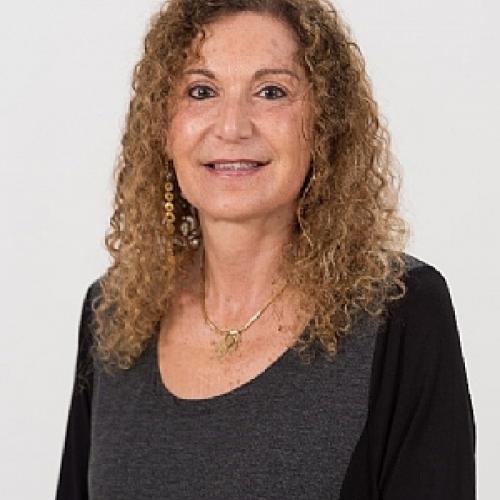Disrupted gut harmony in attention-deficit/hyperactivity disorder: Dysbiosis and decreased short-chain fatty acids
Steckler R.; Magzal F.; Kokot M.; Walkowiak J.; Tamir S. .
Brain, Behavior, & Immunity-Health 2024, 40, 100829 (I.F. 3.7, Q1, Psychiatry and Mental Health)
Microbiota Metabolite Profiles and Dietary Intake in Older Individuals with Insomnia of Short vs. Normal Sleep Duration
Even, C.; Magzal, F.; Shochat, T.; Haimov, I.; Agmon, M.; Tamir, S.
Biomolecules 2024, 14, 419 (I.F. 4.8, Q1, Biochemistry)
Gestational diabetes is driven by microbiota-induced inflammation months before diagnosis
Pinto Y, Frishman S, Turjeman S, Eshel A, Nuriel-ohayon M, Walters W, Parsonnet J, Ley C, Johnson EL, Schweitzer R, Khatib S, Magzal F, Tamir S, Gavish KT, Rautava S, Salminen S, Isolauri E, Yariv O, Peled Y, Poran E, Pardo J, Chen R , Hod M, Ley RE Schwart B, Hadar E, Louzoun Y, Koren O.
Gut, 2023 72(5), (I.F. 31.795, Q1, Gastroenterology)
A personalized diet intervention improves depression symptoms and changes microbiota and metabolite profiles among community-dwelling older adults
Magzal F, Turroni S, Fabbrini M, Barone M, Vitman Schorr A, Ofran A, Tamir S.
Front Nutr. 2023 Sep 14;10:1234549 (I.F. 4.0, Q2, Nutrition and Dietetics)
Responses of the human gut microbiota to physiologically digested insect powders or isolated chitin thereof
Rafael G, Riess HT, Levi CS, Magzal F, Tamir S, Koren O, Lesmes U.
Future Foods 2022; 100197 Elsevier (I.F. 7.2, Q1, Food Science)
Variation in Gut Microbiota Composition is Associated with Sleep Quality and Cognitive Performance in Older Adults with Insomnia
Haimov I, Magzal F, Tamir S, Lalzar M, Asraf K, Milman U, Agmon M, Shochat T.
Nat Sci Sleep 2022;14:1753-1767 (I.F. 5.3, Q2, Behavioral and Neuroscience)
Increased physical activity correlates with gut microbiota composition and reduces short-chain fatty acid concentrations in older adults with insomnia
Magzal F#, Shochat T, Haimov I, Tamir S, Asraf K, Tucher-Arieli M, Even C, Agmon M.
Sci Reports 2022. (I.F. 4.3, Q1, Multidisciplinary)
Associations between fecal short-chain fatty acids and sleep continuity in older adults with insomnia symptoms
Magzal F, Even C., Haimov I, Agmon M, Asraf K, Shochat T, Tamir S.
Sci Rep 2021 11, 4052 (I.F. 4.3, Q1, Multidisciplinary)
Allergic microbial signature in IgE-mediated food allergies
Goldberg MR, Mor H, Magid Neriya D, Magzal F, Muller E, Appel MY, Nachshon L, Borenstein E, Tamir S, Louzoun Y, Youngster I, Elizur A, Koren O.
Genome Medicine. 2020 Oct 27;12(1):92 (I.F. 10.7, Q1, Molecular Medicine)
In-vivo oxidized albumin? a pro-inflammatory agent in hypoalbuminemia.
Magzal F, Sela S, Szuchman-Sapir A, Tamir S, Michelis R, Kristal B
PLoS One 2017 Volume 24 Issue 5 Pages 1-14
Long-lived weight-reduced ?MUPA mice show higher and longer maternal-dependent postnatal leptin surge
Mariel Pinsky, Maayan Rauch, Atallah Abbas, Adi Sharabi-Nov, Snait Tamir, Roee Gutman
PLoS ONE 2017 Volume 12 Issue 11
The effect of caffeine on energy balance
Harpaz E, Tamir S, Weinstein A and Weinstein Y.
J Basic Clin Physiol Pharmacol 2017 Volume 28 Issue 1 Pages 1-10
5,6-?-DHTL, a stable metabolite of arachidonic acid, is a potential EDHF that mediates microvascular dilation.
Levi-Rosenzvig R, Beyer AB, Hockenberry J, Shelly Ben-Shushan R, Chuyun D, Atiya S, Tamir S, Gutterman DD, Szuchman-Sapir A.
FRBM 2017 Volume 103 Pages 87?94
Glabridin, an isoflavan from licorice root, up-regulates paraoxonase 2 expression under hyperglycemia and protects it from oxidation
Yehuda I, Madar Z, Leikin-Frenkel A, Szuchman-Sapir A, Magzal F, Markman G, Tamir S
Molecular Nutrition & Food Research 2016 Volume 60 Issue 2 Pages 287-99
5,6-?-DHTL, a stable metabolite of arachidonic acid, is a potential substrate for paraoxonase 1
Eryanni S, Khatib S, Levi-Rosenzvig R, Tamir S, Szuchman-Sapir A
BBA Molecular and Cell Biology of Lipids 2015 Volume 1851 Pages 1118-1122
Gender effect on vascular responsiveness after bariatric surgery
A. Blum; S. Tamir; D. Hazzan; O. Podvitzky; R. Sirchan; L. Keinan-Boker; R. S. Ben-Shushan; N. Geron
Central European Journal of Medicine 2013 Volume 8 Issue 5 Pages 531-538
The Effect of ?In Favor of Myself?: Preventive Program to Enhance Positive Self and Body Image among Adolescents
Golan M, Hagay N, Tamir S.
PLoS ONE 2013 Volume 8 Issue 11
Gender effect on vascular inflammation following bariatric surgery
A. Blum; S. Tamir; D. Hazzan; O. Podvitzky; R. Sirchan; L. Keinan-Boker; R. S. Ben-Shushan; N. Blum; L. S. Suliman; N. Geron
European Cytokine Network 2012 Volume 23 Issue 4 Pages 154-157
Human atherosclerotic plaque lipid extract impairs the antioxidant defense capacity of monocytes
A. Szuchman-Sapir; M. Etzman; S. Tamir
Biochemical and Biophysical Research Communications 2012 Volume 423 Issue 4 Pages 884-888
Isothiocyanates inhibit psoriasis-related proinflammatory factors in human skin
H. Yehuda; Y. Soroka; M. Zlotkin-FruÅ¡iÄ?; A. Gilhar; Y. Milner; S. Tamir
Inflammation Research 2012 Volume 61 Issue 7 Pages 735-742
A decrease in VEGF and inflammatory markers is associated with diabetic proliferative retinopathy
A. Blum; D. Socea; R. S. Ben-Shushan; L. Keinan-Boker; M. Naftali; G. Segol; S. Tamir
European Cytokine Network 2012 Volume 23 Issue 4 Pages 158-162
Human atherosclerotic plaque lipid extract promotes expression of proinflammatory factors in human monocytes and macrophage-like cells
H. Yehuda; A. Szuchman-Sapir; S. Khatib; R. Musa; S. Tamir
Atherosclerosis 2011 Volume 218 Issue 2 Pages 339-343
Mutual interaction of special phytoestrogenic compounds, their synthetic carboxy-derivatives and the less-calcemic vitamin D analog activities in human derived female cultured osteoblasts
D. Somjen; S. Katzburg; O. Sharon; G. H. Posner; N. Jaccard; D. Hendel; S. Tamir; J. Vaya
Journal of Steroid Biochemistry and Molecular Biology 2011 Volume 127 Issue 04-??? Pages 351-357
Endothelial dysfunction is reversible in helicobacter pylori-positive subjects
A. Blum; S. Tamir; K. Mualem; R. S. Ben-Shushan; L. Keinan-Boker; M. Paritsky
American Journal of Medicine 2011 Volume 124 Issue 12 Pages 1171-1174
Glabridin, a phytoestrogen from licorice root, up-regulates the intracellular antioxidant defense mechanism under glucose stress
Itamar Yehuda1, Zecharia Madar 2, Andrea Szuchman-Sapir1, Snait Tamir 1, 3.
Phytotherapy Research 2011 Volume 25 Issue 5 Pages 659-67

